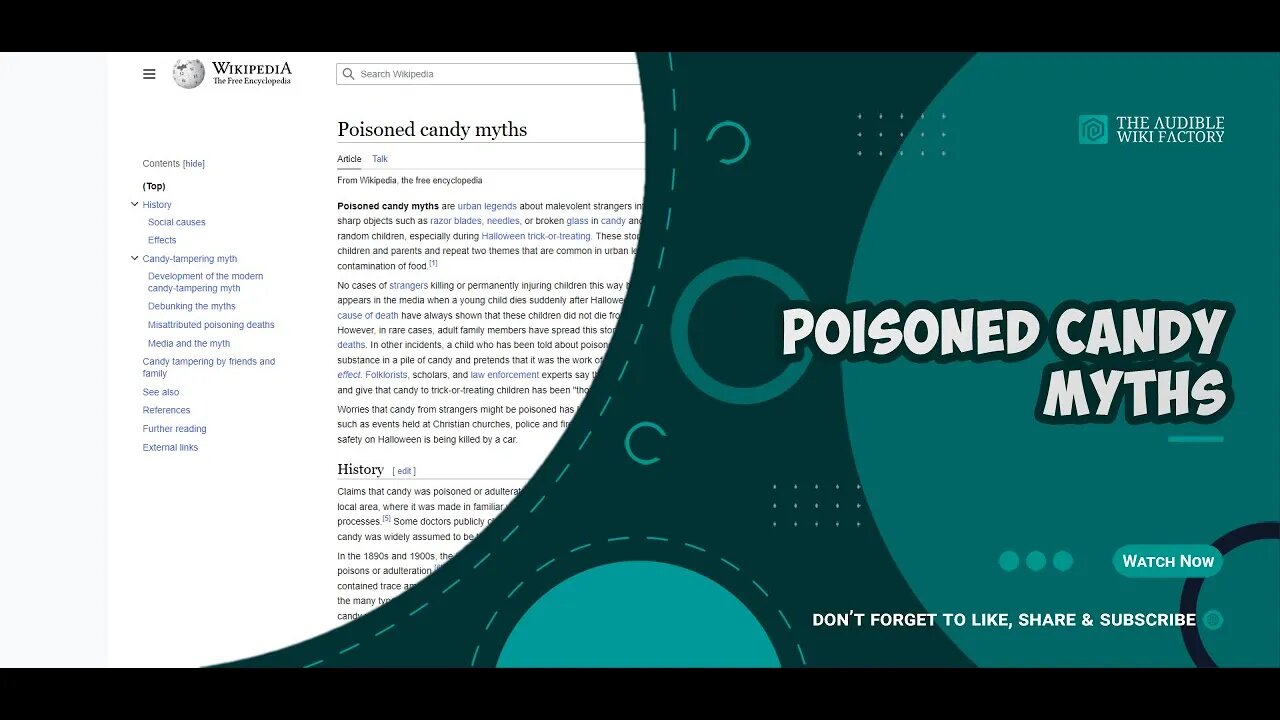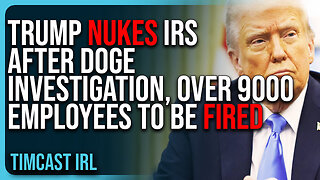Premium Only Content

Poisoned candy myths are urban legends about malevolent strangers intentionally hiding poisons,
Poisoned candy myths are urban legends about malevolent strangers intentionally hiding poisons, drugs, or sharp objects such as razor blades, needles, or broken glass in candy and distributing the candy in order to harm random children, especially during Halloween trick-or-treating. These stories serve as modern cautionary tales to children and parents and repeat two themes that are common in urban legends: danger to children and contamination of food.
No cases of strangers killing or permanently injuring children this way have been proven. Commonly, the story appears in the media when a young child dies suddenly after Halloween. Medical investigations into the actual cause of death have always shown that these children did not die from eating candy given to them by strangers. However, in rare cases, adult family members have spread this story in an effort to cover up murder or accidental deaths. In other incidents, a child who has been told about poisoned candy places a dangerous object or substance in a pile of candy and pretends that it was the work of a stranger. This behavior is called the copycat effect. Folklorists, scholars, and law enforcement experts say that the story that strangers put poison into candy and give that candy to trick-or-treating children has been "thoroughly debunked".
Worries that candy from strangers might be poisoned has led to the rise of alternative events to trick-or-treating, such as events held at Christian churches, police and fire stations, community centers, and retail stores. The primary risk to children's health and safety on Halloween is being killed by a car.
HISTORY
Claims that candy was poisoned or adulterated gained general credence during the Industrial Revolution, when food production moved out of the home or local area, where it was made in familiar ways by known and trusted people, to strangers using unknown ingredients and unfamiliar machines and processes. Some doctors publicly claimed that they were treating children poisoned by candy every day. If a child became ill, and had eaten candy, the candy was widely assumed to be the cause. However, no cases of illness or death were ever substantiated.
In the 1890s and 1900s, the US Bureau of Chemistry, in conjunction with state agencies, tested hundreds of kinds of candy and found no evidence of poisons or adulteration. These tests revealed that inexpensive glucose (from corn syrup) was in common use for cheap candies, that some candies contained trace amounts of copper from uncoated copper cooking pans, and that coal tar dyes were being used for coloring, but there was no evidence of the many types of poison, industrial waste, garbage, or other adulterants alleged to be present. Eventually, the claims that children were being sickened by candy were put down to indigestion due to overeating, or to other causes, including food poisoning due to improper cooking, hygiene, or storage of meat and other foods.
SOCIAL CAUSES
The prevalence and persistence of these myths during the 1960s and 1970s, a time of social upheaval, greater racial integration, and improved status for women, reflected societal questions about who was trustworthy. Because society was struggling with questions about whether to trust neighbors in newly integrated neighborhoods, or young women who were publicly rejecting the subservient, motherhood-focused roles previously assigned to women, these stories about unidentifiable neighbors allegedly harming random, innocent children during an event intended to bring happiness to these children caught and retained the public imagination in a way that accurate stories about a judgmental neighbor, an abusive parent, or an adult carelessly leaving harmful chemicals where children can reach them, would not have. An...
LINK TO ARTICLE: http://en.wikipedia.org/wiki/Poisoned_candy_myths
TAGS: Poisoned candy myths, Poisons, Halloween food, Death hoaxes, Candy
#GeneralKnowledge #AudibleWikiFactory #Audible #Wikipedia #Poisonedcandymyths
-
 34:34
34:34
The Audible Wiki Factory
1 year agoSaint Patrick's Day, or the Feast of Saint Patrick, is a religious and cultural holiday held on
778 -
 12:24
12:24
Winston Marshall
1 day agoWOAH! Bannon just Revealed THIS About MUSK - The Tech-Right vs MAGA Right Civil War Ramps Up
70K109 -
 DVR
DVR
Phyxicx
7 hours agoRaid & Rant with the FF14 Guild on Rumble! Halo Night just wrapped up! - Go Follow all these great guys please! - 2/15/2025
43.2K -
 LIVE
LIVE
Reolock
9 hours agoWoW Classic Hardcore (LVL 60) | RAID DAY | Rumble FIRST HC Raid
1,206 watching -
 3:10:03
3:10:03
Barry Cunningham
7 hours agoTRUMP WEEKEND BRIEFING! MORE WINNING...MORE LEFTIES LOSING IT!
29.3K16 -
 2:20:09
2:20:09
Tundra Tactical
6 hours ago $1.27 earnedIs Trumps Executive Order A Second Amendment Wishlist???: The Worlds Okayest Gun Live Stream
14.1K1 -
 2:33:51
2:33:51
John Crump Live
11 hours ago $7.87 earnedSaturday Night Main Event!
45.6K5 -
 13:57
13:57
TimcastIRL
17 hours agoTrump NUKES IRS After DOGE Investigation, OVER 9000 Employees To Be FIRED
78.5K159 -
 13:35
13:35
Russell Brand
10 hours agoPFIZER JUST MADE THEIR NEXT MOVE AND EXPERTS ARE TERRIFIED
99.3K160 -
 1:15:57
1:15:57
Victor Davis Hanson Show
20 hours agoOver Here, Over There: the Russo-Japanese War and Trumpian Peace Policy
44.2K22